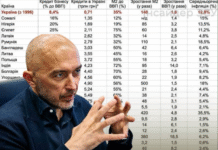1. 1. How many Ukrainians are still abroad
According to Eurostat and UN, As of October 2025, there are about 4.3 million Ukrainian refugees.
The largest communities live in Poland, Germany, Czech Republic, Italy and Spain.
After two years of full-scale war, the majority of Ukrainians adapted to life in the EU, However, economic pressure and cuts to social programmes are creating new challenges.
2. Countries with the highest number of Ukrainians
| Country. | Number of refugees (thousand) | Average allowance (€/month) | Main challenges |
|---|---|---|---|
| Poland | 950 | 150-250 | High rent prices, cuts in aid |
| Germany | 870 | 400-500 | Bureaucracy, language barrier |
| Czech Republic | 520 | 200-300 | Housing shortage, reduced payments |
| Italy | 310 | 150-250 | Difficulties with official employment |
| Spain | 280 | 200-280 | Lack of stable work |
| France | 210 | 350-450 | Language integration, processing time |
| Other EU countries | 1 160 | - | Scattered communities, seasonal employment |
Sources: Eurostat, UNHCR, national statistical offices of EU countries (as of October 2025)
3. Cuts in social assistance
Many countries that accepted Ukrainians in 2025 began to limit payments.
In Poland, the state is gradually Cancels free accommodation in centres, leaving support only for vulnerable groups.
A new system is in place in the Czech Republic income checks, As a result, some Ukrainians lost their right to assistance.
In Germany, the Integration into the labour market: payments are reduced after 6-12 months of employment.
However, most governments emphasise that Ukrainians with children, pensioners and people with disabilities will remain under the protection of EU programmes until the end of 2026.
4. Work and education
About. 60% able-bodied Ukrainians abroad are already working or doing business.
Most often in the service, logistics, healthcare, IT and education sectors.
Educational programmes for Ukrainian children are available in most EU countries.
For example:
In Poland - more than 1,000 schools with Ukrainian-language support;
In Germany. 450 integration classes;
In the Czech Republic, online education combines Ukrainian and local subjects.
5. Attitudes towards returning
According to the research results Kyiv School of Economics (KSE), approximately 35% Ukrainians plan to return home when the situation is safe.
More 40% hesitate, and 25% already under consideration permanent residence in the EU.
The main factors of return:
stable work in Ukraine;
restoring education for children;
secure infrastructure.
6. 6.
Despite the reduction in aid, most Ukrainians have successfully adapted to life in Europe.
However, the main trend in 2025 is returning the social burden to personal responsibility, that stimulates Employment and integration.
It is important for Ukraine to prepare programmes now reintegration and recruitment of specialists, who will return from abroad after the war.




